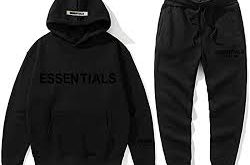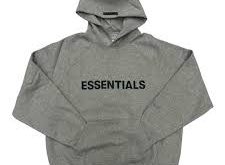The evolution of women’s sports apparel has had a significant Cultural Impact, reflecting broader changes in society. Once limited to practical, utilitarian designs, women’s sportswear has transformed into a fashion-forward industry, combining performance with style. This shift is not just about aesthetics but also empowerment, as more women engage in sports and demand apparel that supports their performance while reflecting their identity.
Early sportswear for women was often restrictive, designed more for modesty than movement. However, as women began participating in sports more actively, there was a clear need for clothing that allowed greater freedom of movement. This led to the development of specialized sports apparel that focused on functionality. Over time, as societal attitudes towards women in sports evolved, so did the design of sportswear, incorporating elements of style that were previously reserved for casual or formal wear.
Today, women’s sports apparel is not just about functionality; it’s also about making a statement. Brands now create clothing that empowers women by allowing them to express their individuality and strength. The cultural impact of this shift is profound, as it has helped to normalize the presence of women in sports, challenging outdated gender norms and inspiring future generations to participate in athletic activities without fear of judgment or exclusion.
Sports Apparel Influences Fashion
Women’s sports apparel has significantly influenced mainstream fashion, blurring the lines between athletic wear and everyday clothing. This trend, often referred to as “athleisure,” has become a dominant force in the fashion industry, with sportswear-inspired styles now commonplace in daily wardrobes.
The rise of athleisure has been driven by a growing demand for comfortable yet stylish clothing that can be worn in various settings. Women, in particular, have embraced this trend, finding that sportswear offers a versatile solution to the modern lifestyle’s demands. Whether heading to the gym, running errands, or meeting friends for lunch, women’s sports apparel has become a go-to choice for its combination of practicality and fashion.
The cultural impact of this trend is evident in the way it has reshaped perceptions of femininity and strength. Women’s sports apparel has become a symbol of empowerment, representing the idea that women can be both strong and stylish. This shift has also led to greater visibility for female athletes, who now have a platform to influence fashion trends and inspire others through their achievements.
Sports Apparel and Positivity
Women’s sports apparel plays a crucial role in promoting body positivity by offering a range of sizes and styles that cater to diverse body types. This inclusivity is essential to challenging traditional beauty standards and encouraging women to embrace their bodies, regardless of shape or size. The push for more inclusive sportswear has led to the development of lines that prioritize comfort, support, and style for all women.
Brands have recognized the need to create clothing that not only fits well but also makes women feel confident and empowered. This shift towards inclusivity has had a significant cultural impact, as it has helped to break down the barriers that often prevent women from participating in sports. Summer collections for girls embody this approach by offering stylish and comfortable options that celebrate diversity and individuality.
By promoting body positivity, women’s sports apparel has also contributed to a broader conversation about health and wellness. It encourages women to focus on their physical and mental well-being rather than striving for an unattainable ideal. This message is particularly important in today’s society, where women are often bombarded with unrealistic images and expectations.
In addition to promoting body positivity, women’s sports apparel also serves as a reminder that fitness is for everyone, regardless of size or ability. By providing options that cater to different needs, the sportswear industry is helping to create a more inclusive and supportive environment for women in sports.
Apparel and Gender Equality
Women’s sports apparel has played a pivotal role in advancing gender equality, both within the sports world and beyond. The availability of high-quality, performance-driven sportswear for women has helped to level the playing field, allowing female athletes to compete at the highest levels.
In the past, women often had to wear ill-fitting or inappropriate clothing that hindered their performance. However, the development of specialized sports apparel for women has changed this dynamic, providing female athletes with the tools they need to succeed. This shift has not only improved the performance of female athletes but has also challenged the stereotypes that have long plagued women in sports.
The impact of women’s sports apparel on gender equality extends beyond the field or court. It has also influenced societal attitudes towards women in sports, helping to break down the barriers that have traditionally kept them out of certain activities. As more women engage in sports and achieve success, the demand for high-quality sportswear continues to grow, further solidifying the role of women in the athletic world.
As women’s sports apparel continues to evolve, its cultural impact will only grow. The success of this industry has already paved the way for greater visibility and representation of women in sports, and this trend is expected to continue. By empowering women to participate in sports and express their individuality through clothing, women’s sports apparel will remain a powerful force for change in the years to come.
The cultural impact of women’s sports apparel cannot be overstated. From promoting body positivity and gender equality to influencing mainstream fashion and supporting sustainability, this industry has changed the way we think about women in sports. As we look to the future, it is clear that women’s sports apparel will continue to play a vital role in shaping our culture and empowering women around the world. The influence of this apparel extends beyond the sports world, reaching into every aspect of society, from fashion to social justice. As the industry grows and evolves, so too will its impact, inspiring future generations of women to pursue their passions and make their mark on the world.
 Daily Blogger News Stay updated with the latest trends and insights. Your reliable source for daily updates and information.
Daily Blogger News Stay updated with the latest trends and insights. Your reliable source for daily updates and information.







